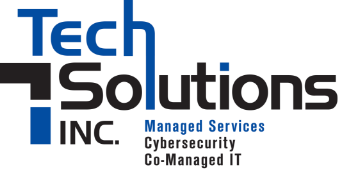
Two terms often thrown around the digital landscape are virtualization and cloud computing. While they are similar technologies, they have distinct differences. This article explains both concepts, including how they work and the ways they can benefit your business. Dive into the world of cloud computing and virtualization, and unlock a deeper understanding of the tools shaping our digital future.
What’s the difference between virtualization and cloud computing?
Think of your computer as a big house. Virtualization is akin to splitting that house into smaller apartments (virtual machines or VMs) to share resources and save energy. You still own the house (hardware) and manage the apartments.
Cloud computing is like renting an apartment in a big building managed by someone else. You don’t have to worry about repairs or maintenance; you just have to choose the size and features you need (such as Infrastructure-as-a-Service, Platform-as-a-Service, or Security-as-a-Service). It’s more flexible and scalable, but you don’t have direct control over everything.
In short, virtualization optimizes your own hardware, while cloud computing rents out everything you need. While both technologies offer compelling advantages, they differ in several important ways:
Deployment and control
Virtualization allows organizations to maintain full control over their infrastructure by keeping operations in house, enabling complete management of resources and configurations. In contrast, cloud computing offers a spectrum of deployment options, including public (shared resources for scalability), private (dedicated resources for customization), and hybrid (a mix of both). The decision of which one to implement boils down to which technology best aligns with a business’s data protection requirements and priorities.
Cost
Virtualization entails significant upfront costs related to hardware, software licenses, and infrastructure deployment, making it a capital-intensive investment for organizations. Despite this, it promises long-term savings by enhancing resource utilization and operational efficiency.
Conversely, cloud computing operates on a pay-as-you-go model, wherein users are billed solely for the resources they utilize on a per-hour, per-minute, or per-second basis. This flexible pricing structure alleviates the need for substantial initial investments and allows organizations to scale infrastructure as needed, optimizing costs and avoiding overprovisioning. Note, though, that meticulous monitoring and resource allocation are essential to prevent unforeseen charges and maintain cost effectiveness in the cloud.
Scalability
Virtual machines can be scaled up or down easily depending on workload demands, making them well suited for environments with variable workloads or seasonal spikes in demand. However, scaling physical hardware to meet increased capacity demands can be slower and more complex, requiring additional procurement, installation, and configuration.
By contrast, cloud computing offers on-demand scalability, allowing organizations to rapidly provision or decommission resources in response to workload fluctuations. This agility and flexibility make the cloud an attractive option for businesses seeking to scale their operations rapidly and efficiently.
Security
While virtualization platforms provide built-in security features such as access controls and encryption, ensuring comprehensive security requires expertise and continuous vigilance.
Organizations must take charge of implementing and maintaining security measures to safeguard their VMs, data, and applications. This involves securing various components such as hypervisors, host systems, and virtual networks against malware, unauthorized access, and other potential threats.
On the other hand, cloud providers offer robust security measures and compliance certifications to shield customer data and infrastructure from external threats. Their security offerings span physical and network security, data encryption, identity management, and continuous monitoring, supported by dedicated security teams and advanced technologies for real-time threat detection and response. By leveraging these cloud security services, businesses can enjoy enhanced protection and peace of mind when transitioning their workloads to the cloud, reducing risk exposure in the process.
Despite these differences, virtualization and cloud computing share common goals of improving IT efficiency, increasing business agility, and driving innovation.
If you want to learn more about how technology can enhance your business performance, get in touch with us. Our experts are ready to help.

